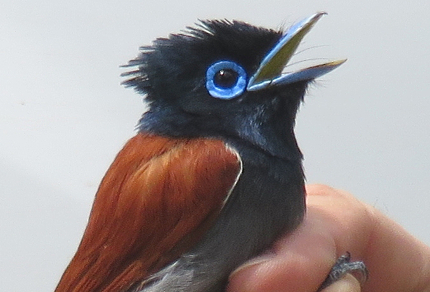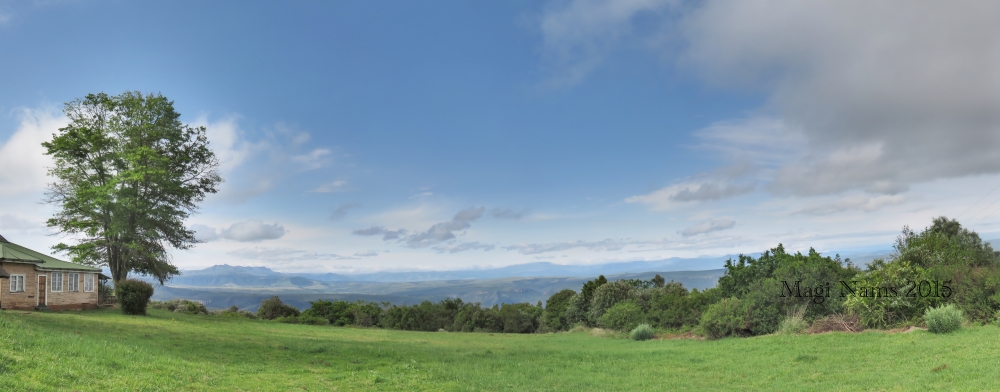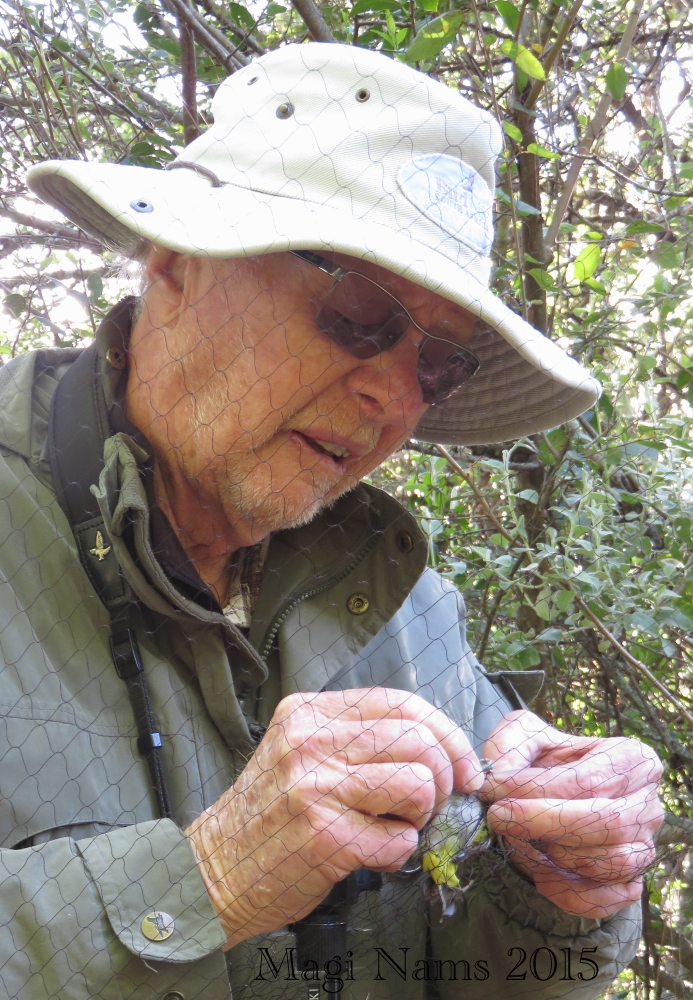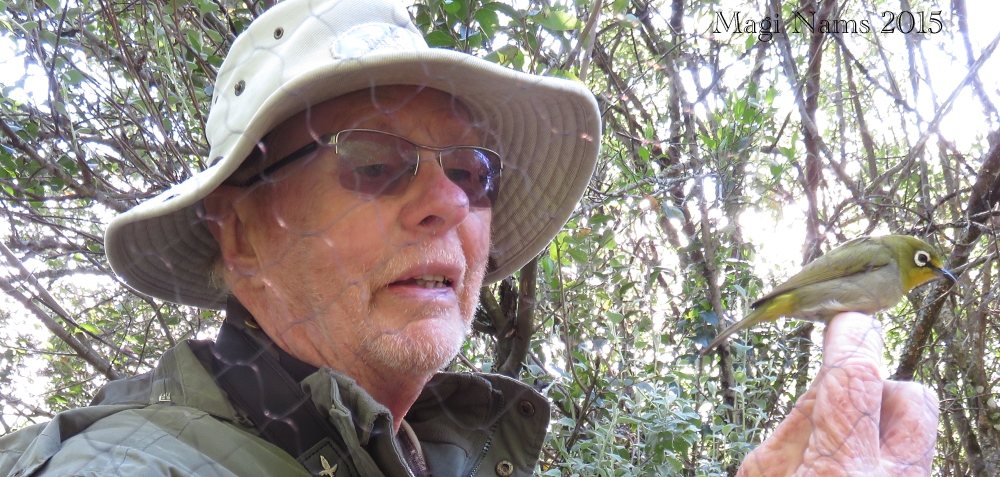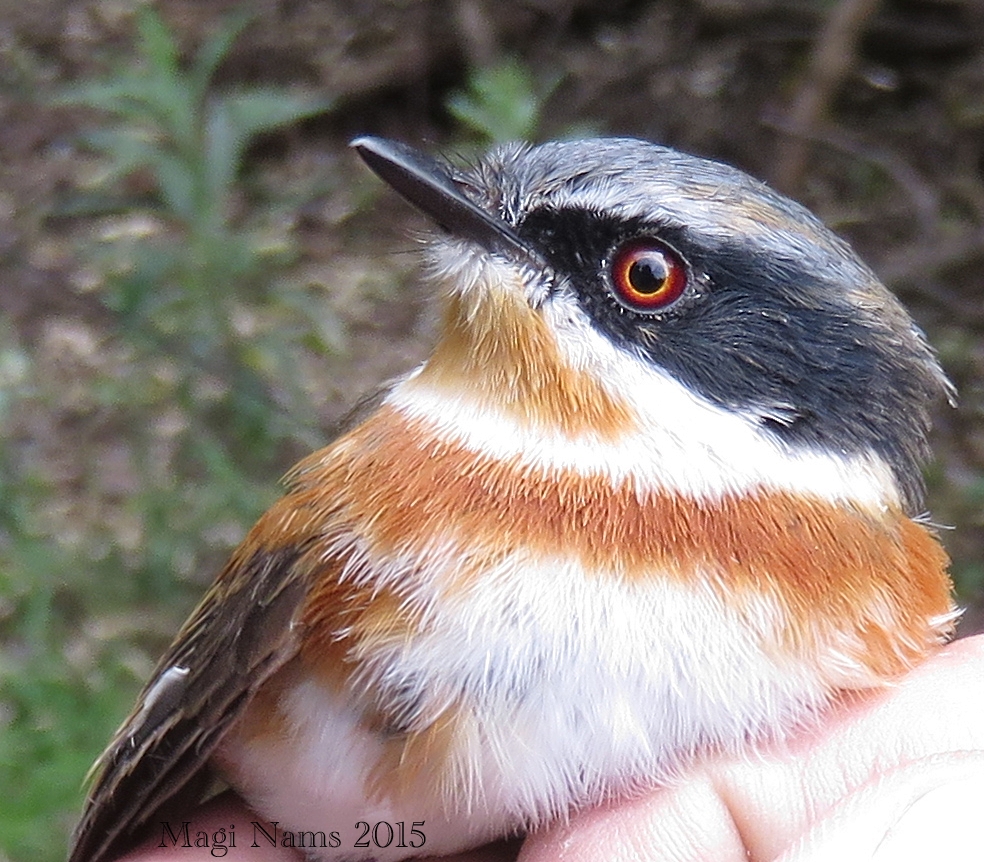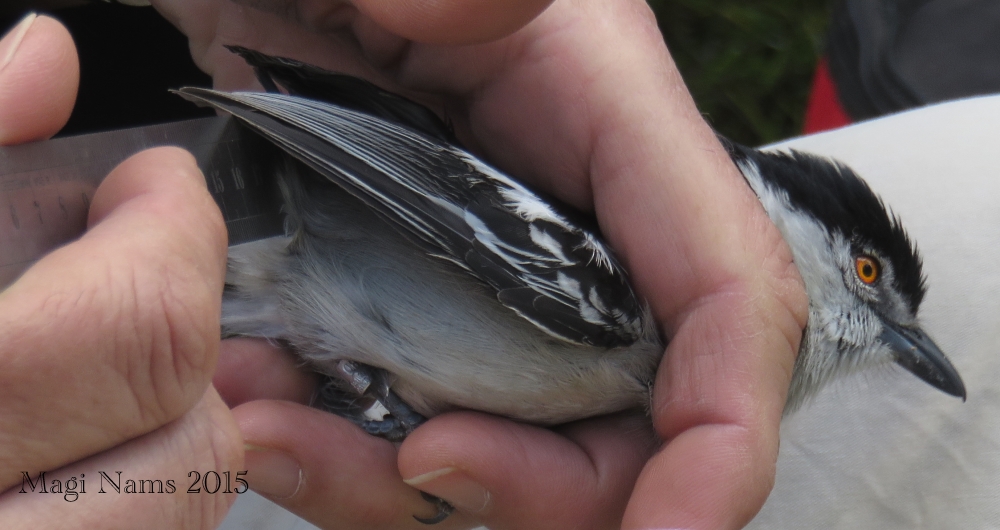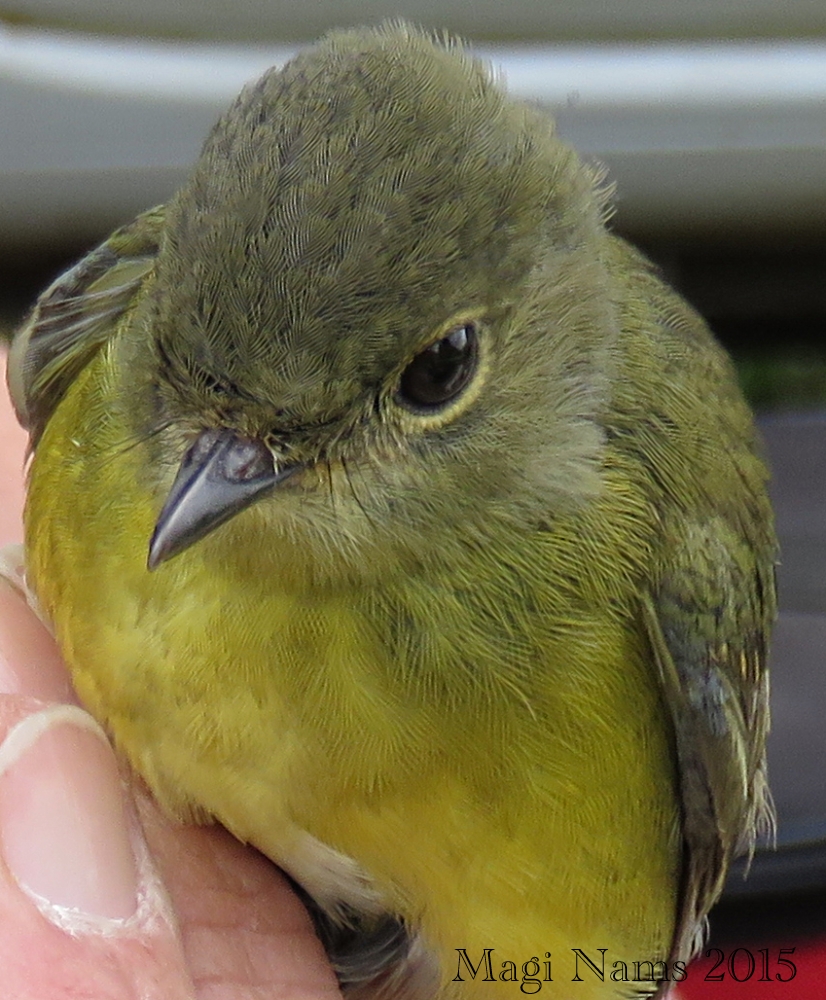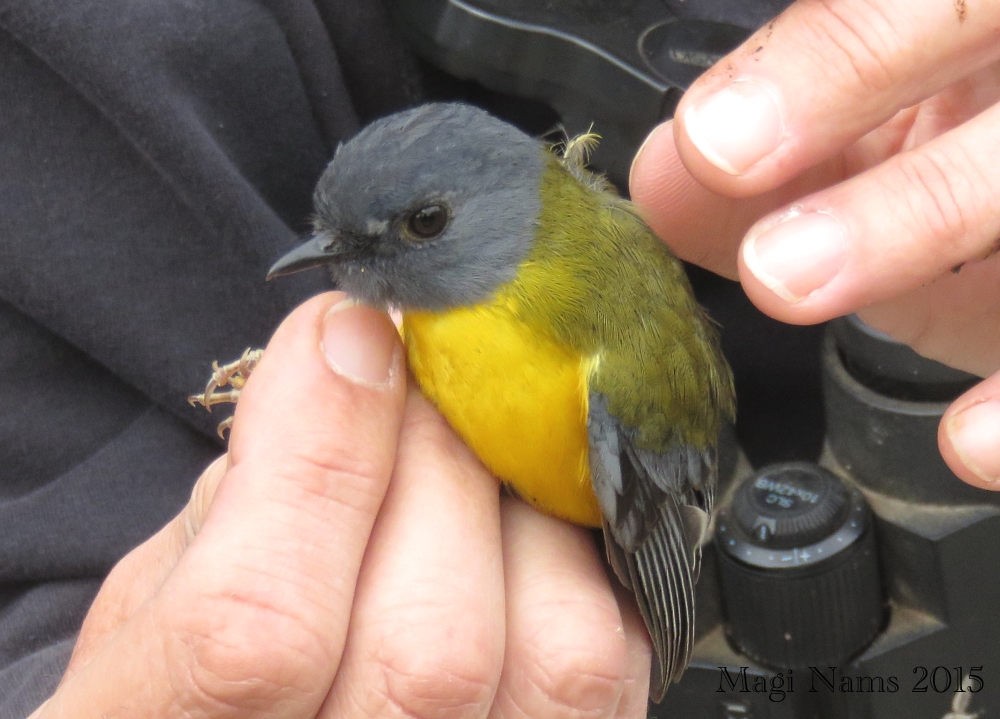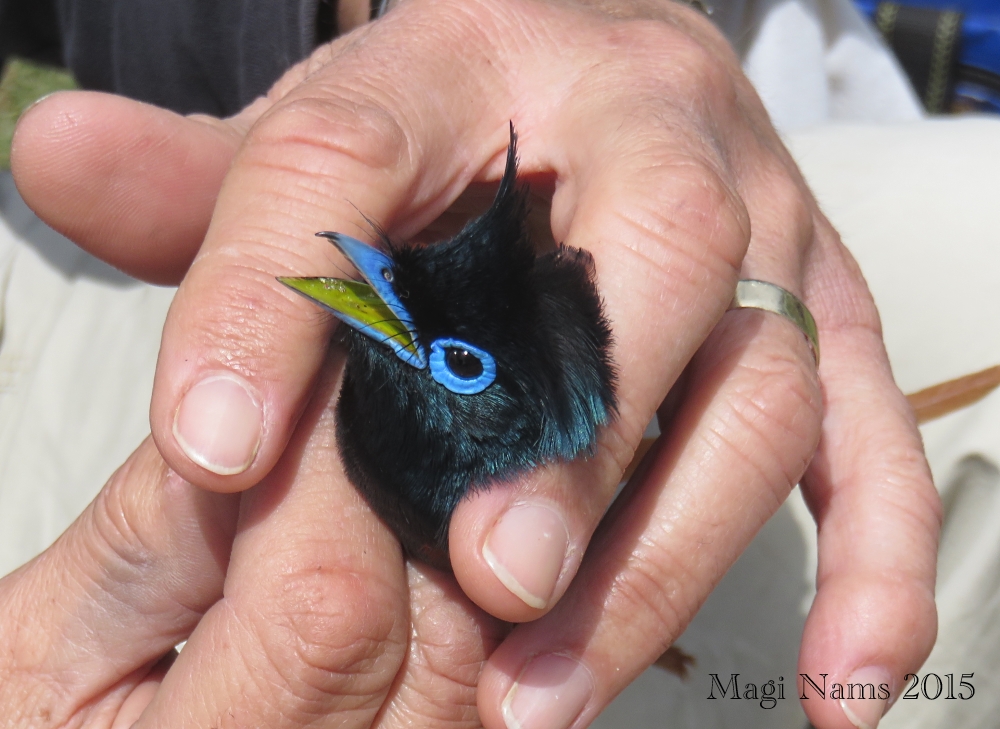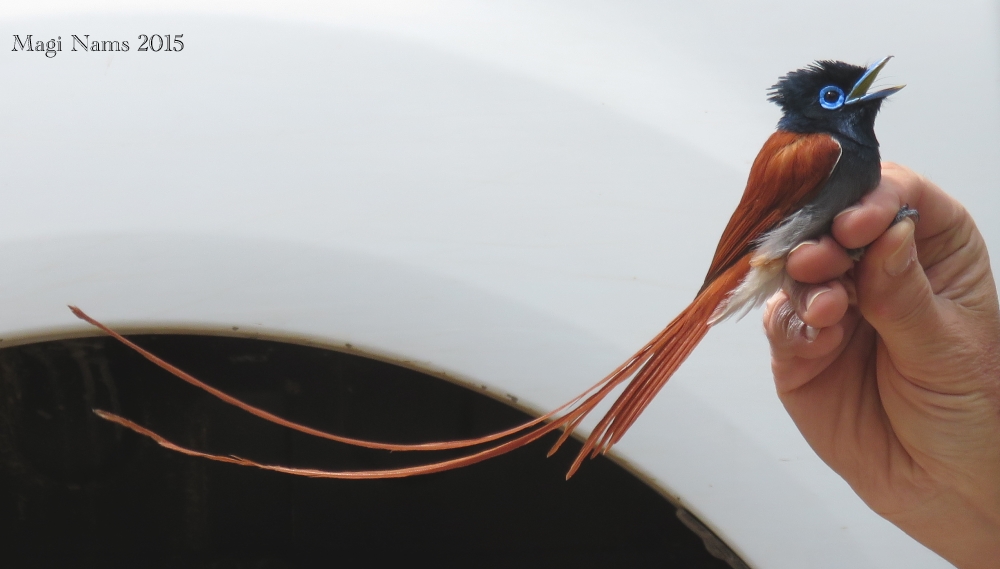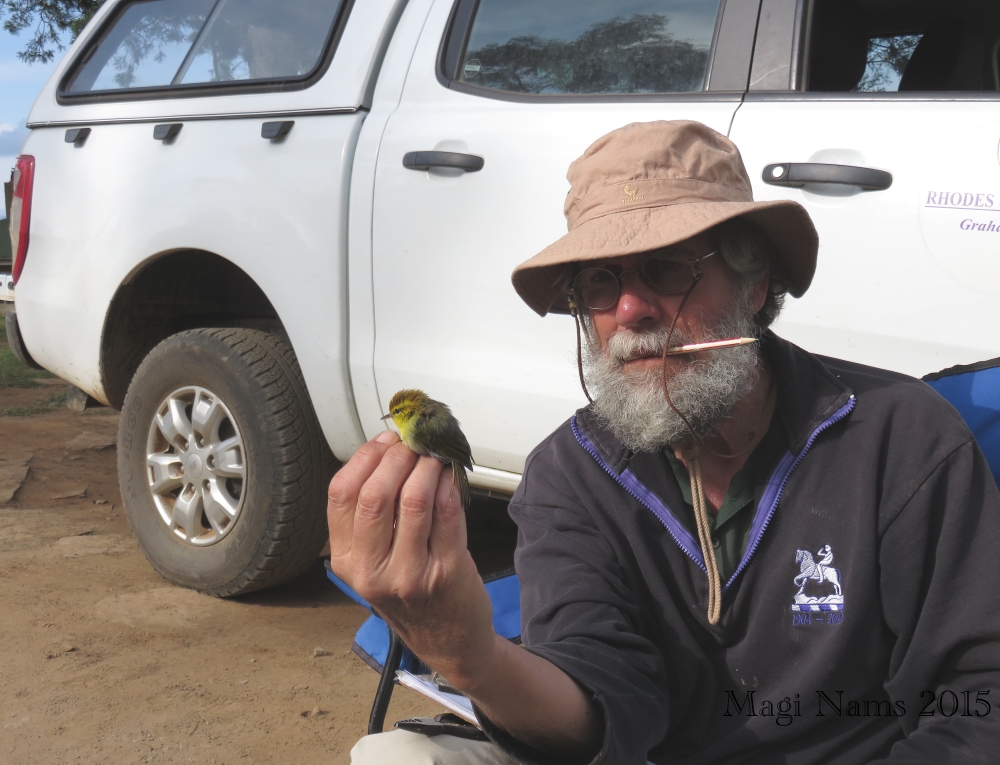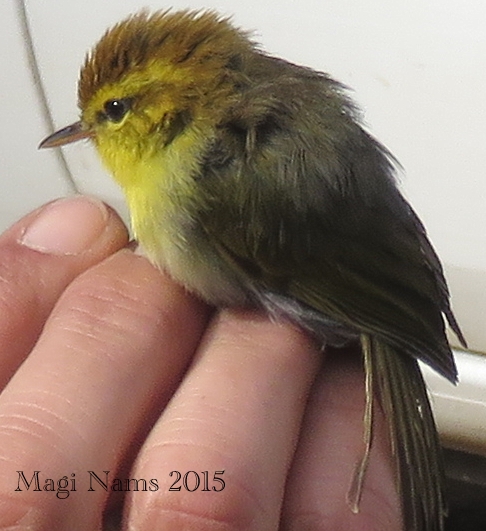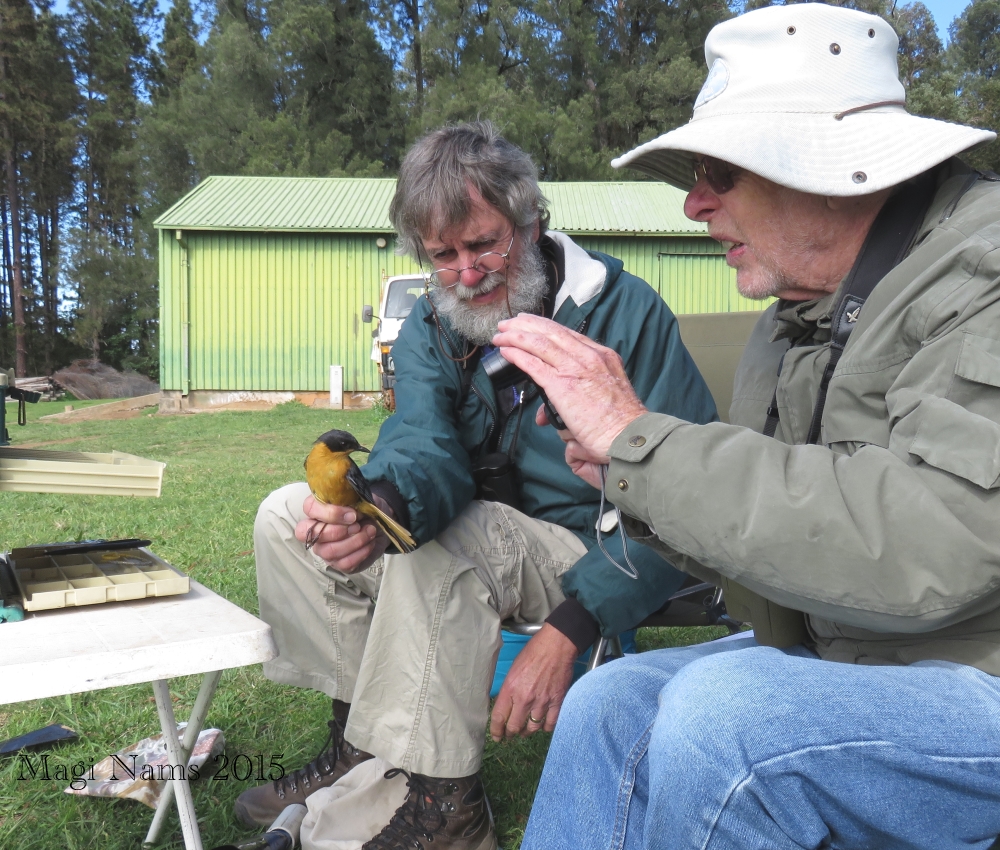A blustery day of spring birding at Fort Fordyce Nature Reserve netted close-up views of exquisite Afromontane forest birds, including the stunningly beautiful African paradise-flycatcher.
In mid-July, I accompanied three Rhodes University ornithologists to Fort Fordyce Nature Reserve (about 100 kilometres north of Grahamstown in Eastern Cape), where we spent an unexpectedly mild winter day mist netting and ringing forest birds. Yesterday, I returned to Fort Fordyce with two of those ornithologists, Drs. Adrian Craig and Pat Hulley, and we spent a blustery day spring birding at Fort Fordyce Nature Reserve. (Tap on photos to enlarge.)
We left Rhodes at 5:15 a.m. and had the mist nets set up along the gently sloping forest trail atop the Great Escarpment before 8 a.m. After breakfast and a hot drink to take the edge off the chill wind that blew over the escarpment, we checked the nets. Already, they had caught Cape white-eyes, a female lesser double-collared sunbird, a green-backed camaroptera, an olive thrush and a chorister robin-chat. The birds’ bodies hung suspended in the fine nets, and several had become quite entangled. With delicate skill and infinite patience, Pat and Adrian extricated the captives, placed each in a cloth bag, and carried the birds uphill to the ringing station we’d set up in the sunshine.
At the ringing station, Adrian removed one bird at a time from its bag and placed a uniquely lettered and numbered tubular ring around one of the bird’s legs. He also measured the bird’s wing length, checked for a brood patch (which shows if a female is incubating eggs), examined the bird’s wings and head for evidence of feather moulting, and lastly, weighed the bird before releasing it. Pat recorded the data, and I gloried in the opportunity to photograph an exquisite collection of South African birds in the hand.
As soon as the first batch of birds had been ringed, we checked the nets again. The highlight of that check was a perky female Cape batis.
While Pat manned the nets, Adrian and I walked part of a hiking trail through Afromontane forest and looked and listened for birds. Through Adrian’s mentorship, I learned to recognize songs of a red-chested cuckoo, green-backed camaroptera, Cape batis and alarm calls of Knysna turacos and black-headed orioles, birds whose songs I know. When we returned to the ringing site, Pat had four birds ready to be ringed: another olive thrush and green-backed camaroptera, plus a female black-backed puffback with gorgeous orange eyes and an immature white-starred robin. A later net check yielded an adult white-starred robin, so I was able to see both immature and adult plumages of this South African forest robin.
Adrian did the next net check and returned with two special birds. The first was a spectacular male African paradise-flycatcher with blue beak and eye wattles, black crest and elongated, rusty-brown tail feathers. When the bird opened its beak, it revealed a yellow gape that presented a striking contrast and made me think of a brightly painted toy, although the flycatcher was far more vibrant than any toy.
The second special bird was a bush blackcap, not as flashy as the paradise-flycather, but unusual as a mist net capture. Pat told me that the bird caught in our nets was only the second bush blackcap he had ever seen clearly. It was my first and, needless to say, I was thrilled. According to the Roberts Bird Guide, bush black-caps are uncommon and bear the Red Data status of near-threatened.
More net checks yielded nothing, until the final check. As we walked down the trail to dismantle the nets, we spotted a tiny yellow-throated woodland-warbler tangled in the fine black mesh. Pat and Adrian worked together to remove it, and we quickly brought down the nets and carried gear and bird uphill for one last ringing job. After the weighing, I released the woodland-warbler, telling it, “Away you go, little one.”
That ended a delightful day devoted to spring birding at Fort Fordyce Nature Reserve. I had felt so much at peace there, with the wind rushing overhead and shoving boughs of pines and oaks in the reserve compound. The view from the escarpment – with the Amathole Mountains etched on a distant horizon – seemed to stretch away forever. We all have special days in our lives. For me, yesterday was one of them.

